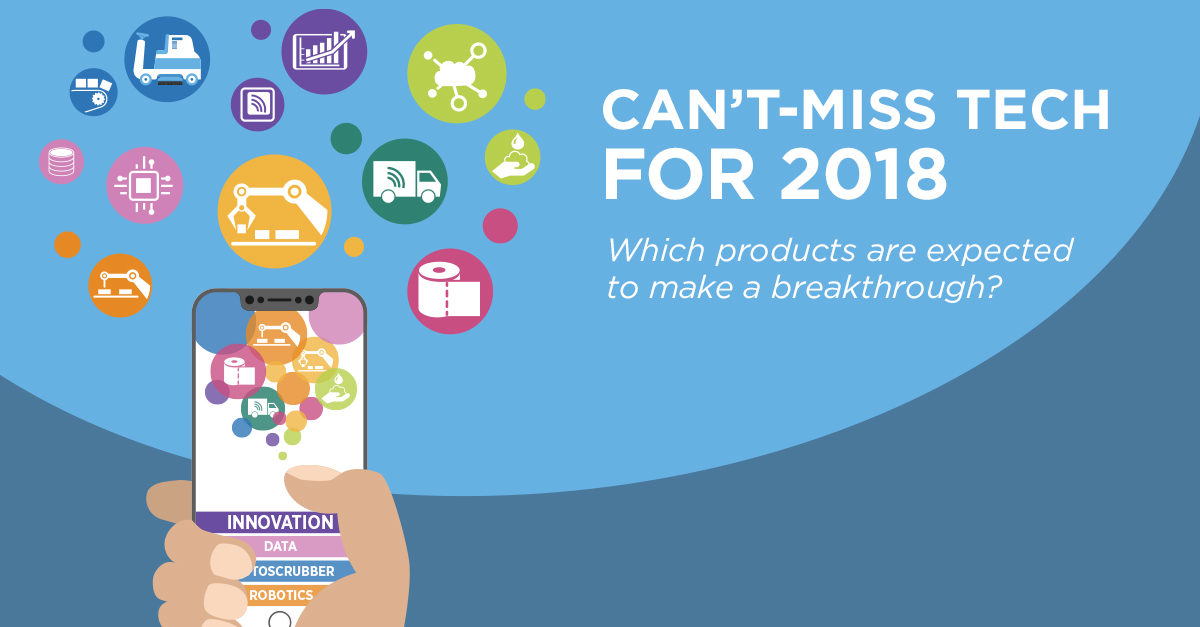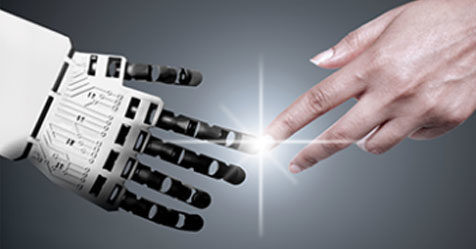During a 2017 seminar on data-driven cleaning, Jimy Baynum, market development director for Essity in North America, said: “Even though we all believe technology will help us, our response [to it] is often delayed. This happens for a variety of reasons, including defense mechanisms, cost, and employee hesitation or refusal.”
Since last year, there’s been a shift in how the industry speaks about technology. This shift was particularly noteworthy at the 2017 ISSA/INTERCLEAN North America trade show in Las Vegas, Nevada. Feelings about technology have morphed from “let me think about this technology” to “how do we implement this, and tell me about best practices.”
Let’s look at five different types of up-and-coming technology and how the industry is planning to embrace them.
1. Data-Driven Cleaning Tools
The connectivity of devices to one another via the internet, also known as the Internet of Things, is not a fad, according to Baynum. The technology is here to stay. “Everybody needs to adopt it quickly,” he said. “Think of it as ‘man and machine’ and not ‘man versus machine.’” But how?
Baynum’s company has brought the Internet of Things approach to venues like stadiums, hospitals, airports, and offices, allowing cleaners and facility managers to track real-time data to ensure that soap, towel, and tissue dispensers are never empty. “The system’s dashboard stores information about issues and problems electronically, not just on a piece of paper,” Baynum said. “Cleaners can digitize their routes based on data. And data allows managers to review trends and analytics.”
Baynum also offered some implementation tips for data-driven cleaning: “Evaluate the challenges. Choose the right partner. Set specific goals. And involve your key stakeholders—the more people who are involved, the more excited they will be.”
2. Robots
A year ago, robots were new, hip, and hot. According to Jan-Willem Tinge, global vice president of facilities and machines for Diversey, and Joe Mann, general manager of Intellibot (a Diversey company), there were just six robotics companies on this industry’s horizon around that time. There are 20 companies today. Overall, floor-cleaning is the fastest growing robotic category in North America.
In their Hands-Free Robotic Cleaning Evolution seminar, Tinge and Mann talked about the new dynamics created by the advent of robots in this industry. “Robots are still new enough to be a ‘cool’ factor,” Mann said, but now they are inviting questions on proper implementation and expectations for both building service contractors and cleaning professionals. For example: How do you write a request for proposal for a robot? How will customers pitch the idea to their managers? Can robots be programmed for multiple sites? What is the life expectancy of a floor-cleaning robot? Most of the questions during Tinge and Mann’s seminar were related to best practices in using robots. A year ago, most questions challenged the concept of robotics in this industry, and provided skepticism about whether robots could even fit in.
The use of robots is now at a place where manufacturers can start addressing more best practices. For example, because robots operate on frequencies they experienced occasional conflicts in buildings with automatic doors, as well as with security gate motion detectors operating on frequencies similar to the robots’ frequencies. Lesson learned? Any possible conflicting frequencies within a building are now measured in advance during a site survey, and the robot settings are adjusted accordingly.
While there are leaders in some product categories who are not keen about increased competition, that is not the case with floor care robotics companies who appreciate the competition and feel that it gives credibility to the technology.
3. Smart Dispensers
Proper hand hygiene is a standard defense against the spread of germs. To help facilities fight colds and flu more effectively, GOJO introduced a new touch-free dispenser that eliminates the hassle of changing batteries. Each new refill has a battery embedded in it; when an empty refill is replaced, so is the battery. These new dispensers can also be integrated with optional plug-in modules to track hand hygiene compliance, receive alerts when dispensers need service, or add other upgrades as technology evolves.
4. Toilet Paper Buzz
And then there was the new toilet paper technology, also known as Biologic Active Tissue Paper. The first to use this technology, Sofidel, explained that when the paper makes contact with water, natural, nonpathogenic microorganisms activate and produce enzymes that are designed to target the major causes of organic waste buildup in pipes. These microorganisms reproduce to multiply the cleaning efforts. Once the dirt has vanished, the enzymes biodegrade, leaving no residue behind. The sanitizing effects are realized in about four weeks, when pipes, septic tanks, and sewer systems are freed of dirt to help prevent blockages. The product also fights unpleasant odors.
5. Electrostatic Innovation
A surface treatment system that uses electrostatic technology won ISSA’s Innovation of the Year award and the trade show’s Visitor’s Choice award this year. The Clorox® Total 360® System combines electrostatic technology with Clorox products to quickly provide coverage of surfaces.
The 360 System electrostatic sprayer puts a charge on the solution with a force stronger than gravity, so the solution is attracted to surfaces in corners, nooks and crannies, and under things that are outside the line of sight. It covers up to 18,000 square feet in two hours. There is minimal residue, and the re-entry time for workers is immediate.
Back to Basics
Innovation and technology in our industry started in 1860 with the electric vacuum, Baynum said, followed by the electric washing machine in 1908, the electric dishwasher in 1929, and the electric clothes dryer in 1938. “We changed our behavior because of these inventions,” Baynum said. It’s only a matter of time until we see what changes next.




